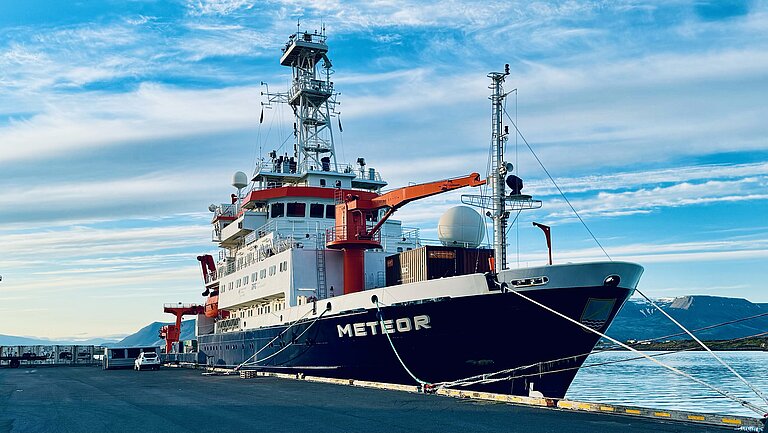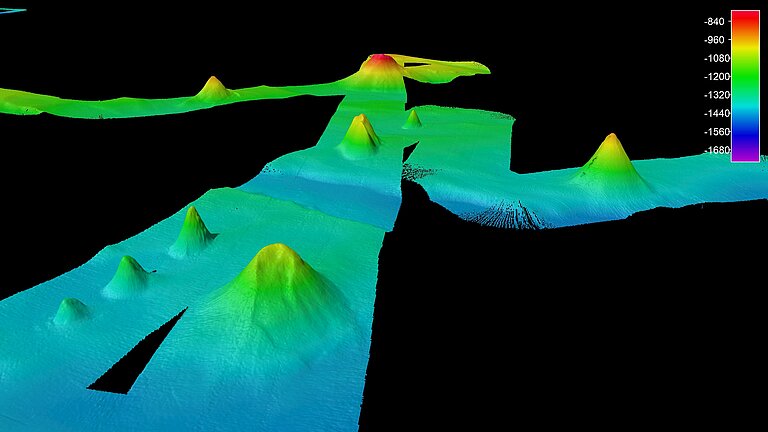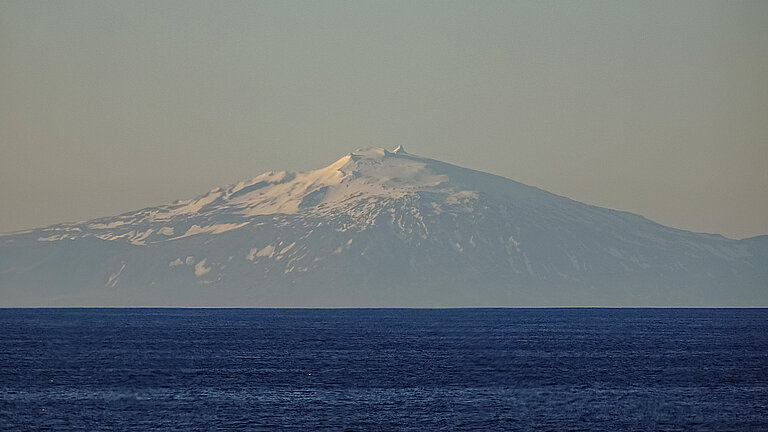Development of young underwater volcanoes off Iceland in focus
METEOR expedition M201 investigates the volcanic history of unusual volcanoes in Iceland's Vesturdjúp Basin
The volcanic island of Iceland, one of the most volcanically active areas on earth, is the destination of RV METEOR expedition M201, which started in Iceland's capital Reykjavik under the leadership of the GEOMAR Helmholtz Centre for Ocean Research. Until mid-July, an international research team will investigate the volcanic history of seemingly unusual underwater volcanoes off the coast of western Iceland.
The expedition, called "Intraplate volcanism off the coast of western Iceland" (Volcanism in the Vesturdjúp Basin – flank igneous system or intraplate volcanism off-shore western Iceland) or "VEBVOLC" for short, is being led by researchers from the University of Hamburg and the University of Gdansk, Poland (Uniwersytet Gdanski) in addition to GEOMAR.
The scientists want to answer two main questions: How old are the volcanoes, and what are the connections to the neighboring Snæfellsnes volcano system or the entire Icelandic plume? In a so-called plume, hot rock material rises from the earth's interior.
The first question concerns the age of the newly discovered volcanoes. Various factors, such as a high slope gradient and less eroded slopes that stand out clearly from the surrounding seabed, suggest that the volcanoes could be younger than the surrounding seabed. The similarly low degree of erosion of all volcanoes indicates they are all about the same age. The researchers assume that they are Holocene in age, meaning that they were formed during the warm period that began 10,000 years ago and continues to this day. They want to verify their assumption using the Ocean Floor Observation System (OFOS), which can be lowered to the sea floor and transmits photos and videos to the ship via cable. "If the volcanoes are of Holocene age, there should be very little sediment on them," explains Dr. Nico Augustin, oceanographer at GEOMAR and expedition leader.
The scientists are also investigating the connection between the volcanoes and the neighboring Icelandic volcanic systems. The region to the west of Iceland has been little studied to date. It is therefore still unclear what connection exists between the presumably young cone-shaped volcanoes, the Icelandic hotspot, the local plate tectonics and the magmatic activity off the island. In particular, it is not clear to what extent the neighbouring Snæfellsnes volcanic system and the Icelandic plume are isolated from the Vesturdjúp volcanic field. Detailed seismic and hydroacoustic mapping can shed light on this. "To evaluate the significance of the newly discovered volcanoes comparatively and to be able to place them in a geological context, the entire extent of this volcanic system and the structures under the seabed must be investigated," says Dr. Augustin.
Rock samples from the volcanoes are also to be recovered. According to the researchers, the magma systems of both volcanic fields are expected to branch off from each other. "If the Vesturdjúp magma system comes from the nearby Snæfellsnes volcanic zone or the Iceland plume, we expect an alkaline composition that differs from normal ocean crust," explains Augustin. If not, it could mean that the Vesturdjúp system is a new and independent intraplate volcanic system.
Expedition at a Glance:
METEOR Expedition M102
Project Name: VEBVOLC
Chief Scientist: Dr. Nico Augustin
Dates: 09.06.2024 – 18.07.2024
Departure: Reykjavik, Island
Arrival: Praia da Vitória, Azoren, Portugal
Study Area: Island
Funding:
The METEOR expedition M102 is funded by the German Research Foundation (DFG) and the Federal Ministry of Education and Research (BMBF) under the name "Intraplate Volcanism off the Coast of Western Iceland", or "VEBVOLC" for short.

FS METEOR in the harbour of Reykjavik, Iceland. Photo: Nico Augustin

Image of a group of presumably younger cone-shaped volcanoes. Recorded with the METEOR EM122 echo sounder. Photo: M201 Scientific Party

Snaefelsness volcano on Iceland. Photo: Froukje van der Zwan


